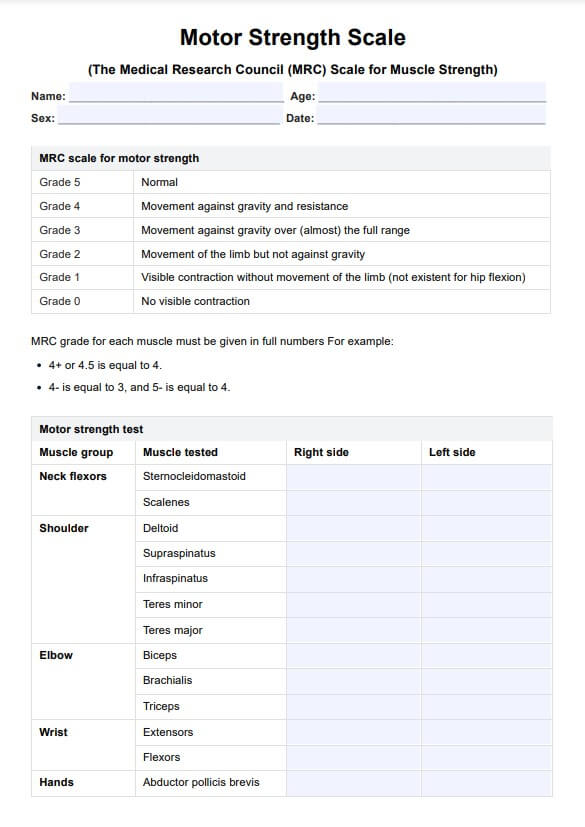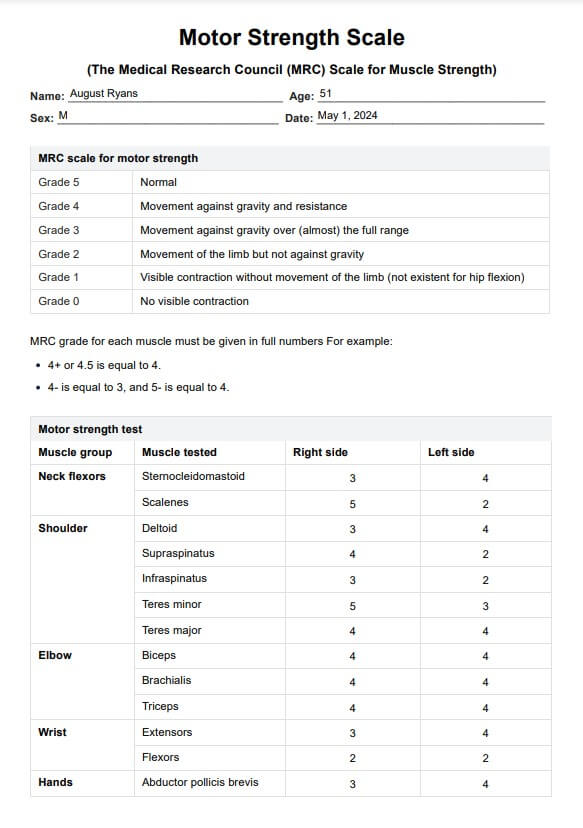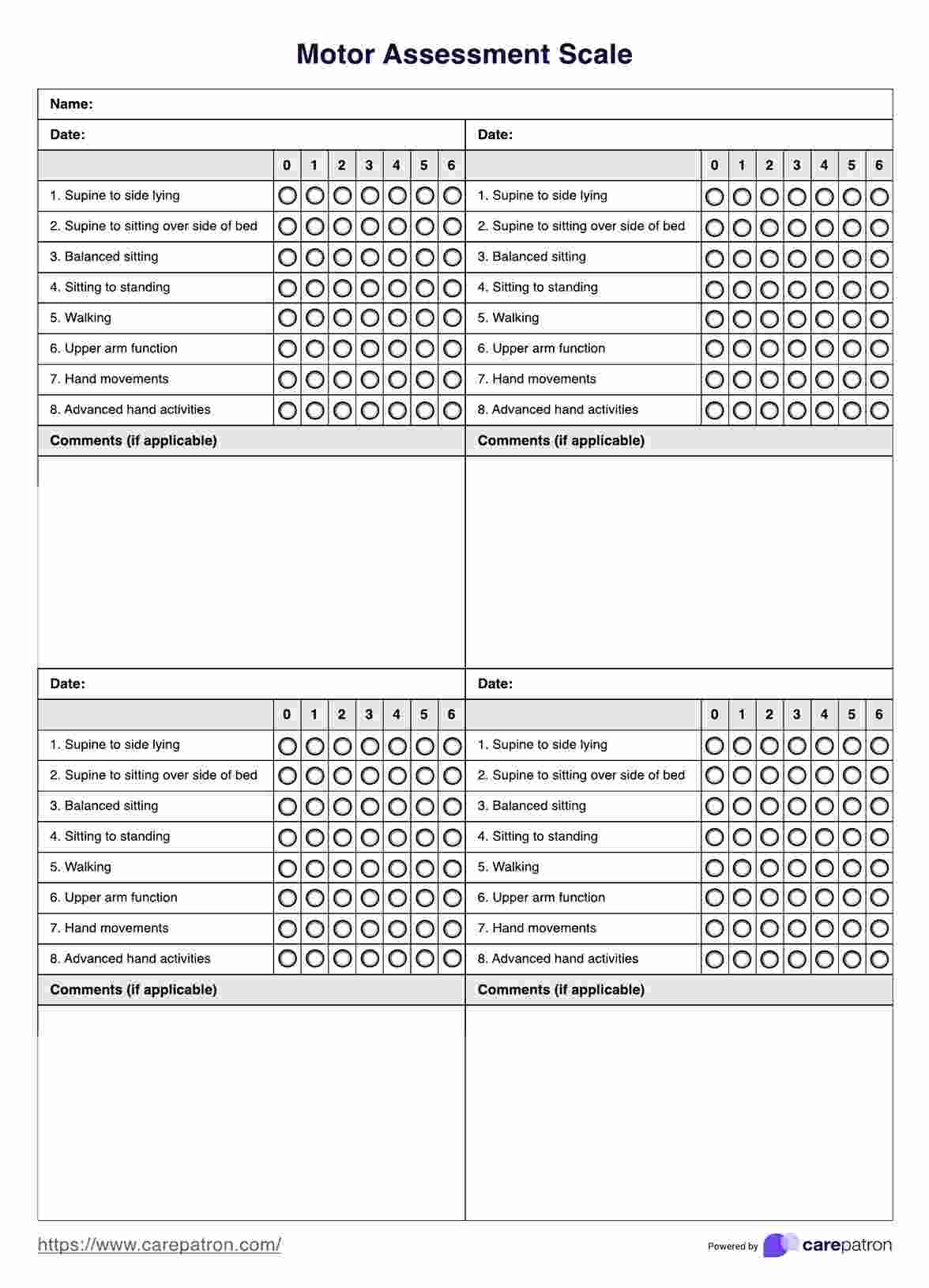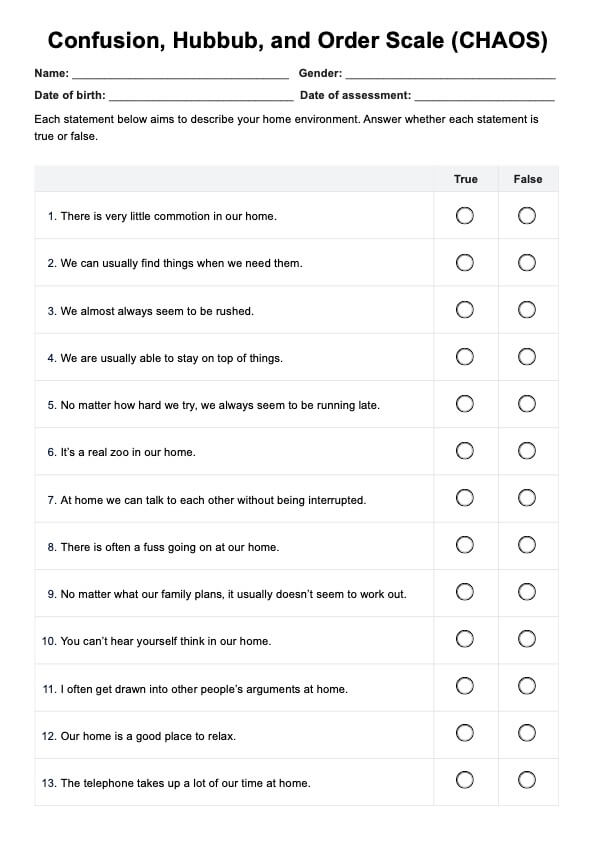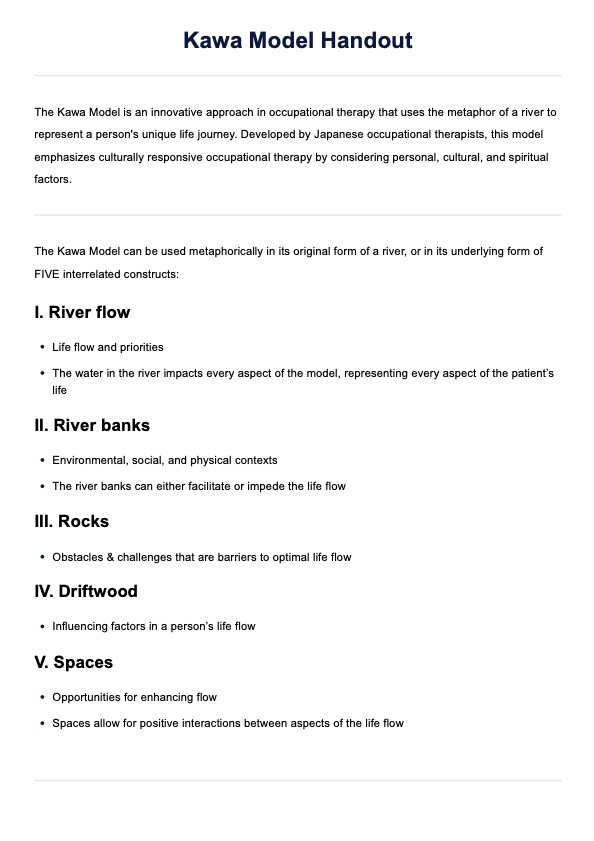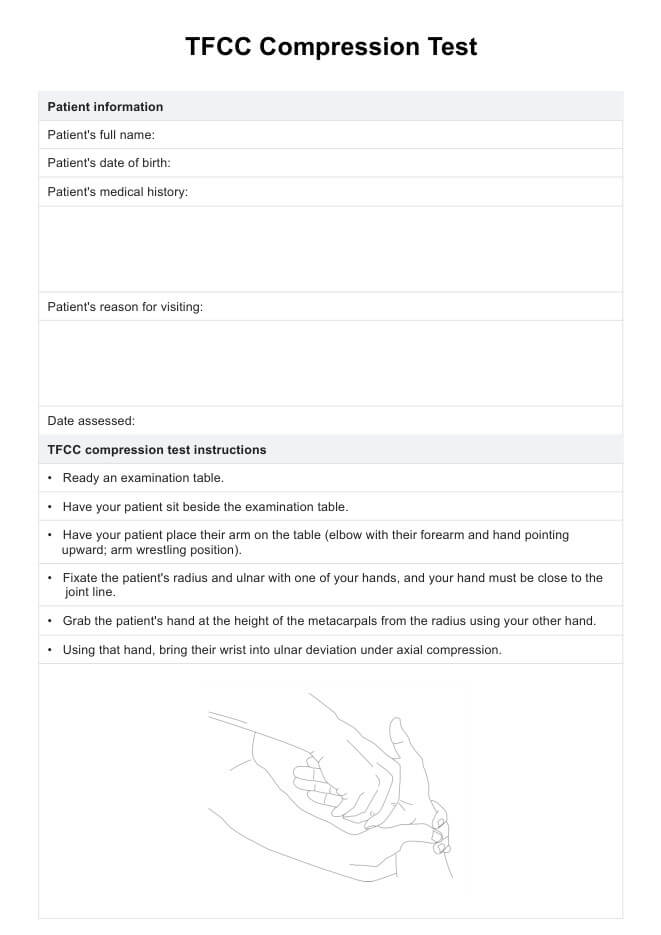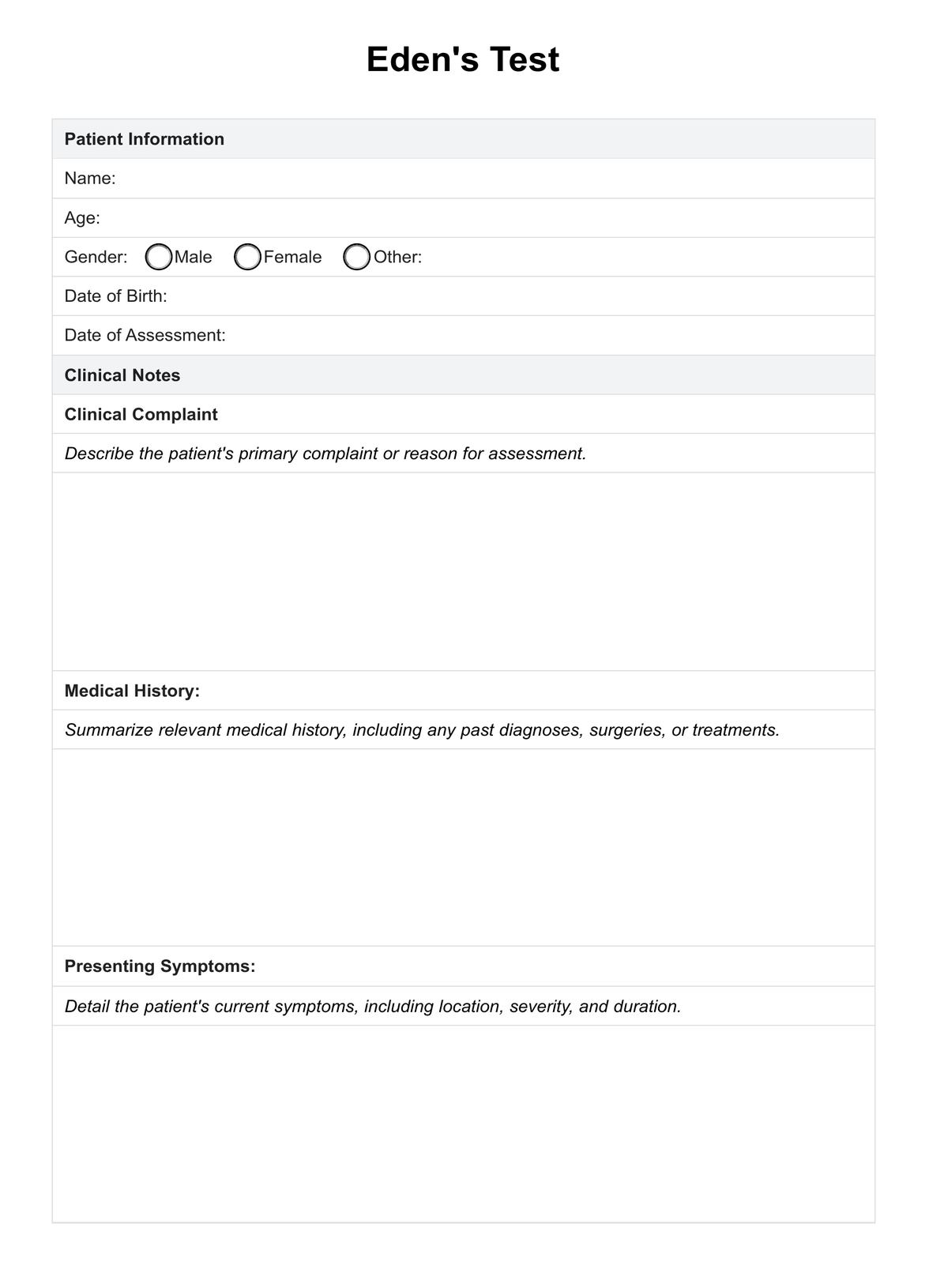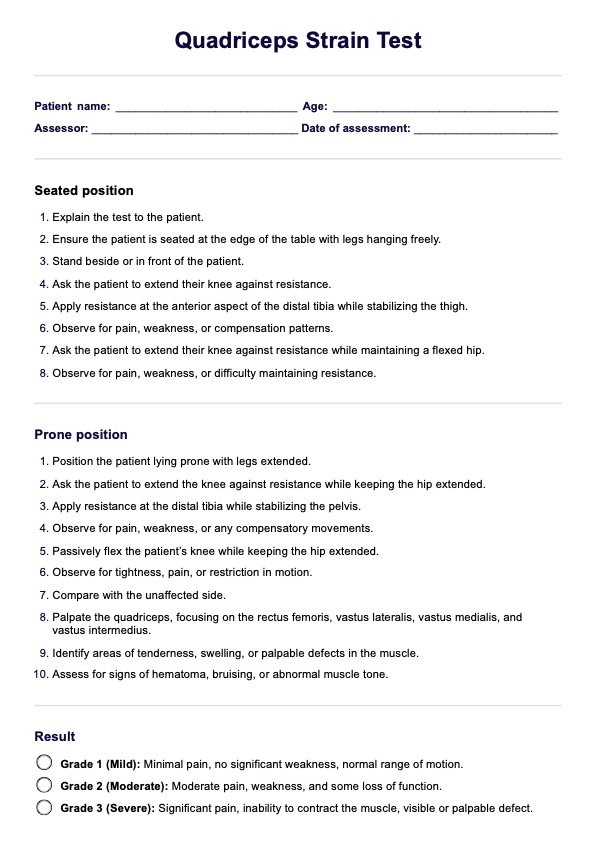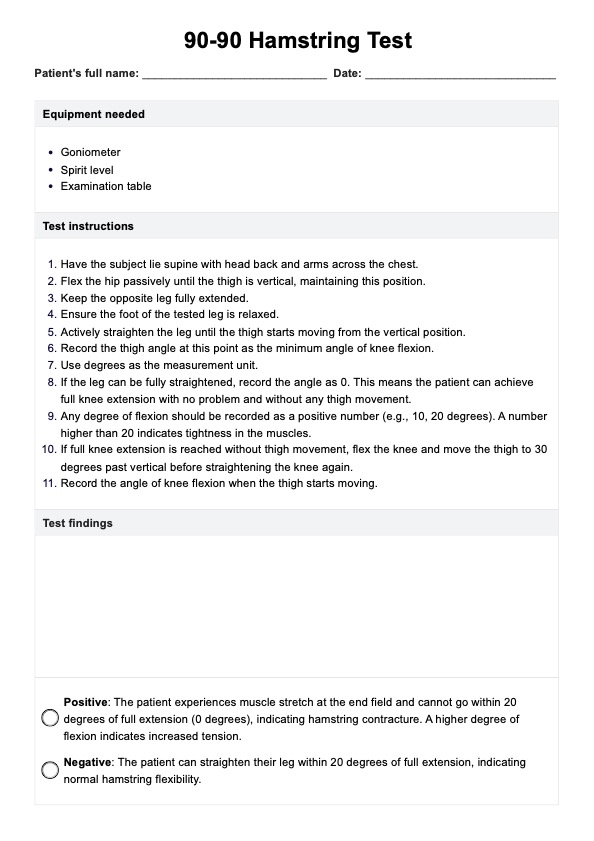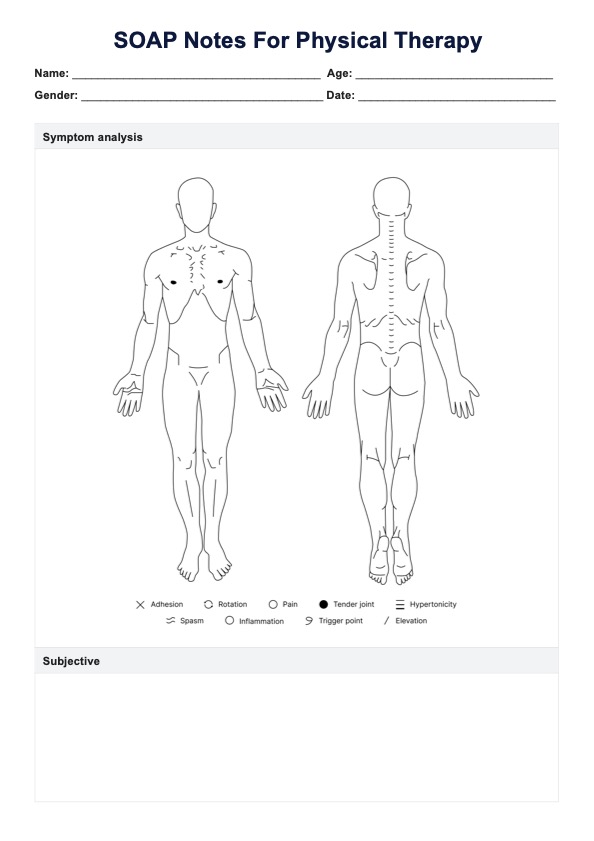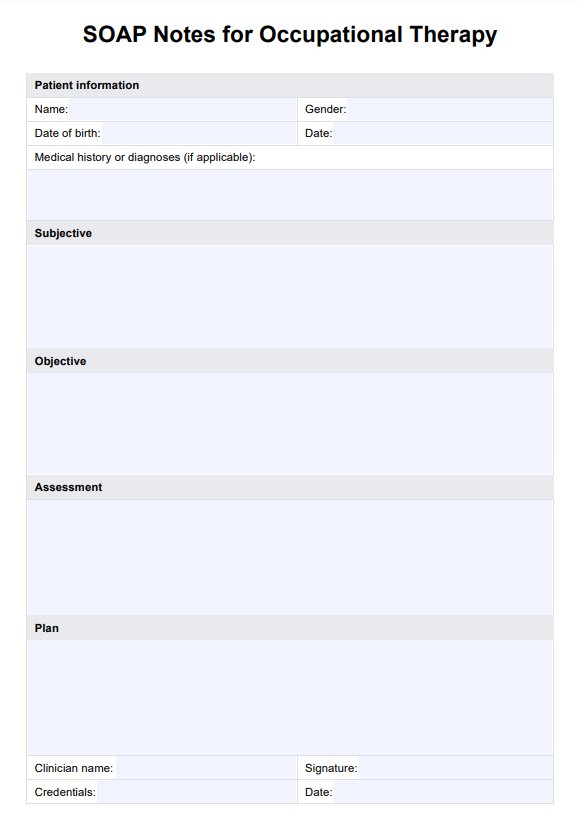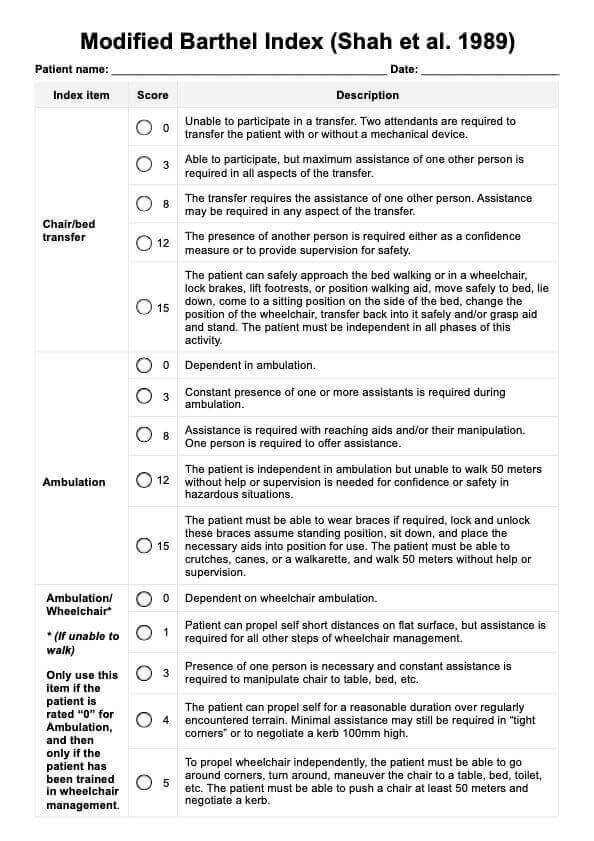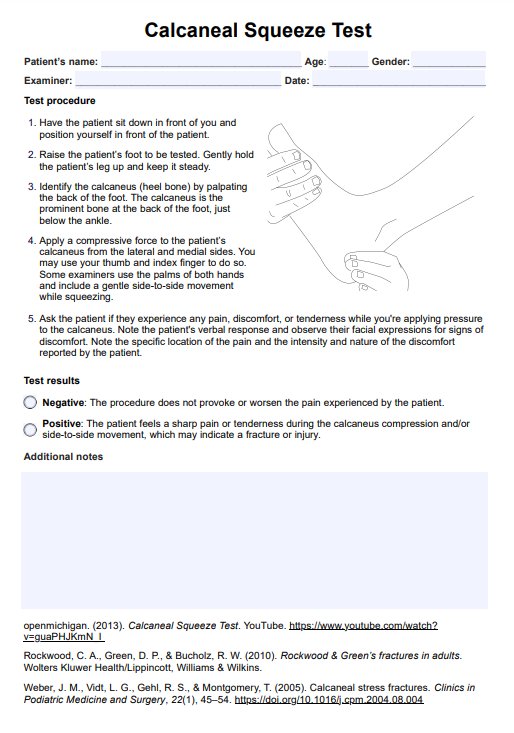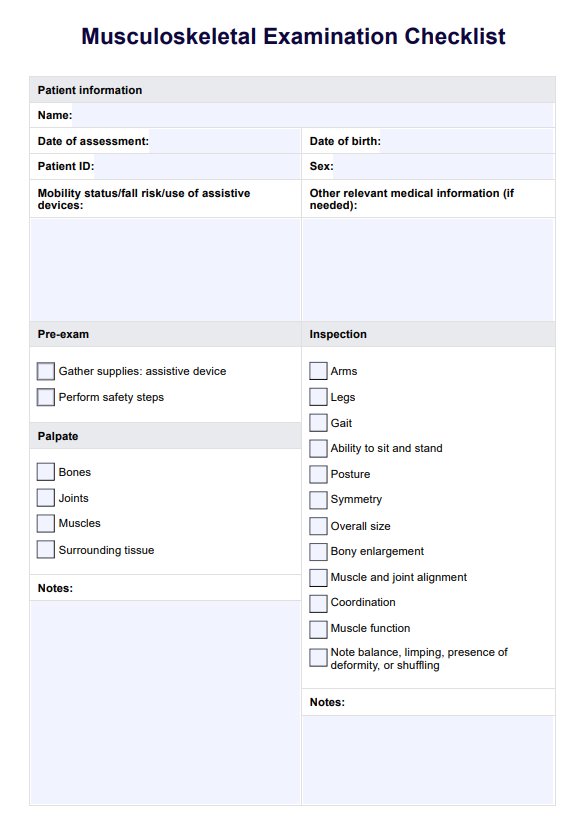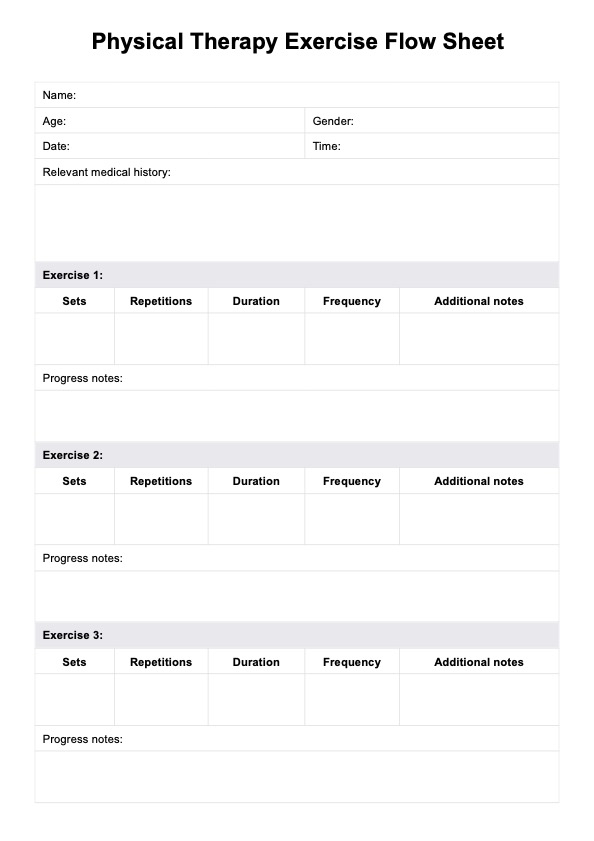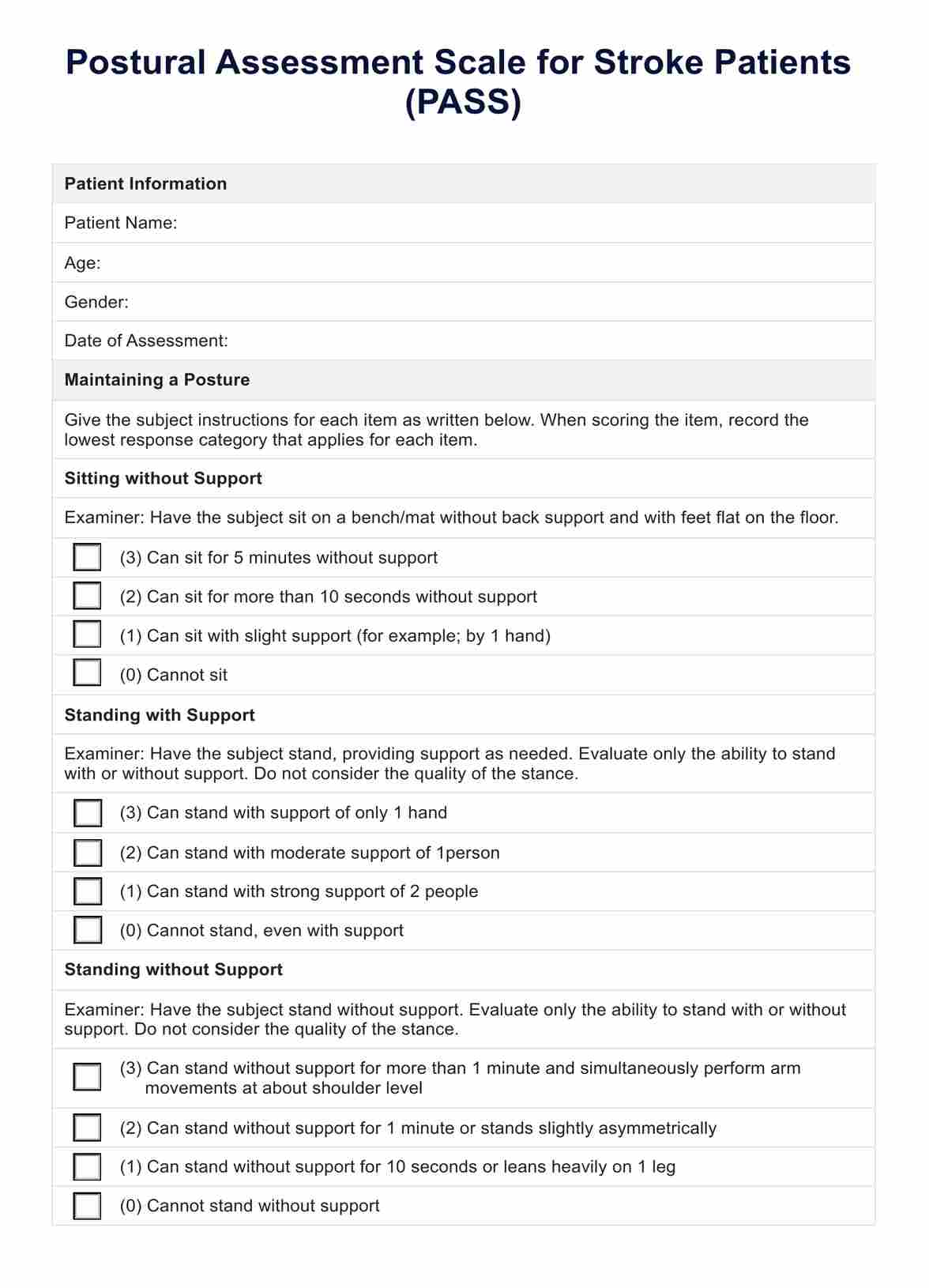Motor Strength Scale
Access a free Motor Strength Scale based on the Medical Research Council scale. Download a free PDF to use for your assessments.


What is the Motor Strength Scale?
The Motor Strength Scale, or the Medical Research Council (MRC) Scale for Muscle Strength, assesses motor strength on a scale of 0 to 5, with 0 being no muscle movement and 5 being normal strength. The scale uses the following motor strength grading system:
- Grade 5: Normal
- Grade 4: Movement against gravity and resistance
- Grade 3: Movement against gravity over (almost) the full range
- Grade 2: Movement of the limb but not against gravity
- Grade 1: Visible contraction without movement of the limb (not existent for hip flexion)
- Grade 0: No visible contraction
Typically used in manual muscle testing or muscle strength testing, this muscle testing tool can be used by healthcare providers to determine if there is any weakness or loss of muscle function in both upper and lower extremities, which may be a sign of an underlying medical condition (e.g., weak motor strength in the hip suggests pelvic girdle weakness and weak shoulder motor strength suggests shoulder girdle weakness.
The MRC Scale is widely used in medical settings and has been found to be a reliable and valid measure for assessing motor strength (Paternostro-Sluga et al., 2008). It can also be adapted for use in different populations, such as children or individuals with neurological conditions.
While this Motor Strength Scale primarily assesses voluntary muscle movement, it can also help identify potential areas of weakness that may require further investigation or treatment. Additionally, the scale can be useful for tracking progress in patients undergoing rehabilitation or physical therapy.
Motor Strength Scale Template
Motor Strength Scale Example
When to use this motor strength chart template?
Here are some specific situations where the Motor Strength Scale can be particularly useful:
Monitoring progress in physical therapy
Physical therapists use the Motor Strength Scale to track their patients' progress during rehabilitation. By regularly assessing each muscle group's strength on a numeric scale from 0 to 5, they can measure improvements and adjust treatment plans accordingly.
Diagnosing neuromuscular disorders
The Motor Strength Scale is also an essential tool in diagnosing various neuromuscular disorders, such as muscular dystrophy, myasthenia gravis, and amyotrophic lateral sclerosis (ALS). These conditions can cause muscle weakness and atrophy, which can be accurately measured using the MRC scale.
Evaluating medication effectiveness
For individuals with neurological conditions like multiple sclerosis or Parkinson's disease, medications are often prescribed to manage symptoms and improve motor function. The Motor Strength Scale is used to assess whether these medications are effectively improving muscle strength.
Assessing for muscle weakness in critical care settings
In critical care units, patients may experience muscle weakness due to prolonged bed rest and immobility. The Motor Strength Scale can be used to assess any changes in muscle strength over time and help healthcare providers adjust interventions accordingly. By regularly assessing strength using this scale, medical professionals can prevent further complications such as contractures or pressure ulcers caused by immobility.
The Motor Strength Scale is valuable for healthcare providers to assess a patient's muscle strength and function. By identifying areas of weakness, providers can develop an appropriate treatment plan to help patients regain strength and independence.
Benefits of using this Motor Strength Scale
Here are some of the benefits of using a Motor Strength Scale:
Provides objective measurements
The MRC scale provides a standard and objective way of measuring muscle strength, eliminating any subjectivity in the assessment.
Enables tracking of progress
By providing a numerical score, the Motor Strength Scale allows for easy tracking of an individual's progress over time. This can be especially useful in rehabilitation settings to monitor improvements or identify areas that need more attention.
Helps with treatment planning
With this scale, healthcare professionals can accurately identify which muscle groups are affected and to what extent. This information is crucial in creating targeted and effective treatment plans for individuals with neuromuscular conditions.
Facilitates communication among healthcare providers
The Motor Strength Scale uses a standardized scoring system, making it easier for different healthcare providers to communicate and track a patient's progress. This is especially beneficial when multiple specialists are involved in a patient's care.
Early detection of muscle weakness
Regular use of the MRC scale can help detect any changes in muscle strength early on, allowing for timely interventions to prevent further complications.
Commonly asked questions
Motor strength is typically graded using the Medical Research Council (MRC) Scales that assesses muscle contraction and the ability to move a muscle against resistance. This muscle strength grading system ranges from 0 to 5.
3/5 motor strength means the muscle can move through its full range of motion against gravity but cannot resist additional pressure. This level indicates that the muscle has some strength but is not fully functional.
Normal motor strength is graded as 5/5, which means the muscle has full strength, allowing for complete range of motion and resistance against full force. When evaluating muscle strength, it's important to assess key muscles and muscle groups to determine the functional capacity of specific spinal nerve roots and their associated muscle contraction.


